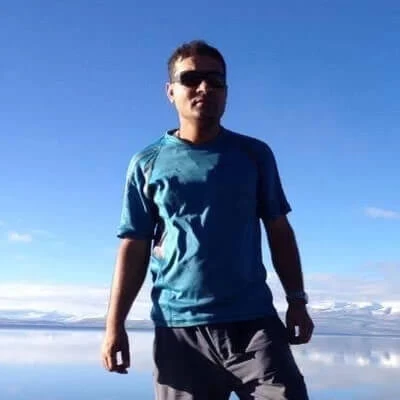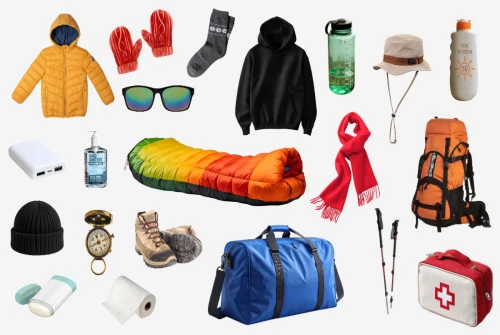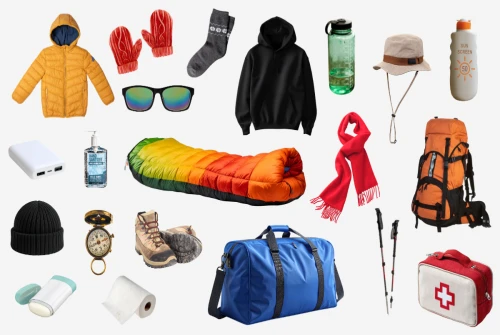Lobuche East Peak Climb
Lobuche Peak is positioned in the vicinity of the Cho La Pass and the Everest base camp. It comprises two summits: Lobuche East (6,119 meters) and Lobuche West (6,145 meters). Our focus here is on climbing Lobuche East, which falls under the category of trekking peaks. In contrast, Lobuche West is considerably more technical and is classified as an expedition peak. The peak rises above Lobuche village and the Khumbu Glacier, with Mount Everest and Mount Lhotse, situated 13.5 kilometers to the east.
Climbing Lobuche Peak, all things considered isn't excessively challenging from a technical standpoint. However, the route to the summit does entail negotiating a steep slope, an ice wall, and a number of crevasses. Starting from the Lobuche base camp, climbers ascend to the Lobuche high camp, with the summit located in close proximity to this high camp. The ascent involves traversing a sharp snow ridge and making a northwest turn. Just before reaching the summit, there's a challenging 45° slope that must be overcome.
Island Peak Climb
Island Peak, locally known as Imja Tse, is one of the highly sought-after trekking peaks in the Khumbu region. It stands at an elevation of 6,160 meters above sea level and holds an Alpine PD+ grading. While the ascent of Island Peak is not extremely technical, it does demand good physical fitness. The journey to the summit commences from Chhukung village, following a steep path through the primary valley. The trail then leads up the southern flank of the Lhotse Glacier moraine. Subsequently, it crosses the moraines of the Imja and Lhotse glaciers to reach the base camp of Island Peak. On the summit day, climbers typically wake up around midnight to prepare. The route involves traversing a rocky ridge to a glacier, and above the ridge lies a steep snow headwall leading to the Island Peak summit. The final part of the climb includes ascending a slope with a gradient of 60° to 70° that leads to the summit ridge.
It's important to emphasize that both of these peak climbs necessitate mountaineering experience, physical fitness, and the acquisition of essential climbing gear. It's highly advisable to enlist the services of a reputable trekking agency that can provide experienced guides and comprehensive support throughout the entire expedition. Additionally, proper acclimatization to the altitude and readiness to confront variable weather conditions in the Himalayas are crucial elements of a successful climb. In conclusion, combining the Lobuche Peak, Island Peak, and Everest Base Camp trek offers an exhilarating and demanding adventure, blending trekking and mountaineering experiences in the iconic Everest region of Nepal.
Key Highlights of Lobuche and Island Peak Climbing
- An excursion to Kala Patthar, offering unparalleled views of Mt. Everest and the Everest Base Camp.
- Breathtaking vistas of numerous Himalayan peaks, including Everest, Cho Oyu, Pumori, Lhotse, Makalu, Nuptse, Ama Dablam, and the surrounding mountains.
- Immersion in the rich Sherpa culture and traditions, experiencing the warmth of the local community.
- An unforgettable journey through the Khumbu region, renowned for its towering Himalayan peaks in Nepal.
- Meaningful interactions and excellent coordination with experienced Everest summiteers and Sherpa guides.
- Exploration of the stunning Sagarmatha National Park, recognized as a UNESCO World Heritage site.
- Immerse yourself in the age-old Sherpa culture, experience their genuine hospitality, and visit spiritual Buddhist monasteries.
- Witness the vibrant and colorful prayer flags, symbolizing purity and spirituality in the region.
Lobuche East V/S Island Peak – Climbing Route
The trekking routes leading to both Lobuche East and Island Peak share similarities. The journey initiates in Lukla and takes you through various settlements, including Phakding, Namche Bazaar, Syangboche, Tengboche, and Dingboche. From Dingboche, traveling eastward leads to Chukkung and the base camp for Island Peak. Conversely, heading westward leads to the Lobuche settlement and eventually to the Lobuche Base Camp.
Lobuche East: The ascent begins from the base camp as you gradually progress towards the high camp for the day. The paths primarily consist of rocky moraines with a moderately inclined angle. Up to the high camp, mountaineering equipment is typically not required. Upon reaching the high camp, the guides will set up the necessary ropes for the primary ascent to the summit of Lobuche East.
The main climb presents several technical challenges and demands exceptional physical endurance. The final stages of the trail often necessitate the use of crampons, ice axes, and ropes, as it features a steep 45-degree incline. Additionally, the peak includes a false summit southeast of the true summit. The actual peak is located a couple of hours further along the ridge heading northwest. From the summit, you'll be greeted by breathtaking views of Lhotse, Nuptse, and Ama Dablam.
Island Peak: The climb to Island Peak begins from the base camp at 5,087 meters, known as Pareshaya Gyab. Climbers typically commence the summit push early in the morning, around 2-3 am. The destination for the day is the High Camp at approximately 5,600 meters. The ascent from the base camp to the high camp is essentially a hike. However, beyond the high camp, some challenging sections involve moderate scrambling and a steep ascent through a wide open gorge.
Upon reaching the gorge, the journey continues along the glacier, progressing toward a steep icy slope. Fixed ropes are employed for the strenuous climb of nearly 100 meters to reach the summit ridge. Once you reach the summit, the panoramic view includes the massive presence of Lhotse, towering more than 2,300 meters above the summit.
Lobuche East V/S Island Peak – Climbing and Difficulty
Both Island Peak and Lobuche Peak East are renowned for their challenging nature, making them the most sought-after climbing peaks in the Khumbu region. Among the two, Lobuche Peak East is considered the more technically demanding climb, while Island Peak enjoys greater popularity.
Lobuche (East) Peak: When discussing the Lobuche Peak climb, it specifically refers to the ascent of Lobuche East summit. This climb is known for its technical complexity and challenges. The journey to the summit involves navigating sharp descents and tackling steep 45-degree snowy slopes.
Climbers attempting Lobuche East must possess advanced climbing knowledge and mastery of climbing gear usage. Proficiency in handling descenders on fixed lines, as well as the correct use of crampons, ice axes, ice screws, and pickets while fixing ropes, is essential. Dealing with steep, slippery, and icy rock slabs and managing the snow slopes present significant challenges, necessitating advanced rock climbing skills.
The Lobuche East Peak was first ascended by Laurence Nielson and Sherpa Ang Gyalzen on April 24, 1984.
Island Peak: Island Peak, also known as Imja Tse, captivates observers with its graceful presence resembling an island amidst a sea of ice, especially when viewed from Dingboche. In 1952, Sir Eric Shipton, while exploring the Barun George, laid eyes on the peak and christened it the 'Island Peak.'
Situated above the summer settlements of Chhukung, Island Peak is a popular trekking peak in the Khumbu region. Although it presents several technical sections, it is considered less challenging than Lobuche East in terms of technical difficulty.
Climbers tackling Island Peak encounter numerous crevasses and rocky, slippery boulders on their way to the summit. Proficiency in using ropes, ice axes, and crampons is crucial. However, from a technical standpoint, it is considered more manageable than the Lobuche East climb.
The first successful ascent of the Island Peak was achieved by Charles Evans, Alf Gregory, Charles Wylie, and Tenzing Norgay. Many climbers opt for the Island Peak climb as preparation before attempting higher ascents, including Everest itself.
Lobuche East V/S Island Peak – Food and Accommodation:
During your trek towards Island Peak, you will find accommodation in tea houses in the evenings until you reach Chhomrong. Throughout the trek, you will have access to breakfast, lunch, and dinner, along with a cup of tea or coffee.
The Everest Region is a well-established destination for both trekkers and climbers, resulting in numerous lodges and tea houses along the trail. Some of the best guesthouses even offer international cuisine options, broadening your dining choices.
While on either of these treks, it's highly recommended to sample the local cuisine, giving you a taste of the region's culinary delights, which you're likely to enjoy. However, it's important to note that the high-altitude terrain limits the availability of certain foods due to less fertile land for cultivation. Fortunately, transportation by planes and vehicles plays a crucial role in delivering vegetables and other essential ingredients to enhance your culinary experience while staying in the region.
Beyond this point, there are no settlements as you progress towards the base camp. You will carry packed lunches during the climbing phase from the base camp. The journey provides numerous teahouses and budget-friendly hotels, offering accommodation services up to the village. As for the Lobuche East Peak climb, you can expect basic facilities, primarily double-sharing rooms with shared bathrooms, up to the Lobuche village. Hence, you won't need to set up tents except at the base camp and high camp. While the facilities are basic, they provide adequate comfort for your journey.
Lobuche East V/S Island Peak- Best season:
The optimal periods for embarking on an Island Peak expedition are typically during the spring season, spanning from March to May, and the autumn season, which runs from September to November. However, it's worth noting that Island Peak can be approached year-round, provided climbers possess sufficient experience in trekking and peak climbing. Winter on the peak is characterized by an extensive accumulation of snow, contributing to challenging conditions.
On the other hand, conquering Lobuche East presents a notably more demanding climb compared to Island Peak. The most favorable seasons for scaling Lobuche East Peak are the spring months of March to May and the autumn season from September to November. It's important to underscore that attempting Lobuche East during the winter and monsoon periods can be quite formidable. During these times, climbers face heightened challenges, necessitating the use of ladders and fixed ropes to ensure a safe ascent.
Lobuche East V/S Island Peak: Required Permits
Lobuche East and Island Peak are two popular trekking peaks in the Khumbu region of Nepal. Both climbs require various permits and documents to ensure a safe and regulated experience for climbers. Here's a breakdown of the required permits for each peak:
Lobuche East:
Makalu Barun National Park Entry Permit: Climbers heading to Lobuche East need to obtain a Makalu Barun National Park Entry Permit. The permit fees vary depending on your nationality: NPR 3,000 for foreign nationals and NPR 1,500 for SAARC nationals. You can obtain this permit either at the Nepal Tourism Board office in Bhirkhutimandap or in Kothe.
Lobuche Peak Climbing Permit: The Lobuche Peak Climbing Permit is required for Lobuche East. The permit costs USD 400 for the first ten days and USD 40 per day for each additional day during the pre-monsoon season (March to May) and post-monsoon season (September to November). During the winter season (December to February) and summer season (June to August), the fee is USD 200 for the first ten days and USD 20 per day for each additional day.
Island Peak:
Khumbu Rural Municipality Entrance Permit: Climbers attempting Island Peak need to purchase the Khumbu Rural Municipality Entrance Permit. The cost for this permit is NPR 2,000 per person, and you can obtain it in Lukla or Monjo. Please note that this permit is not available in Kathmandu.
Sagarmatha National Park Entry Permit: To enter Sagarmatha National Park, where Island Peak is located, you must have a separate permit called the Sagarmatha National Park Entry Permit. The permit fee is NPR 3,000 per person, and you can acquire it in Monjo at the park's entrance.
Island Peak Climbing Permit: Similar to Lobuche East, Island Peak requires a climbing permit. The cost of this permit varies depending on the season: USD 250 per person for the spring (March to May), USD 125 per person for the autumn (September to November), and USD 70 per person for both the winter (December to February) and summer (June to August) seasons.
These permits are essential to ensure that climbers have legal access to the respective areas, and they help fund conservation efforts and maintain the infrastructure in these fragile Himalayan environments. Climbers should carry their permits at all times during their expeditions and be prepared to show them to park officials when requested.
Lobuche East vs. Island Peak Climbing Requirements
Climbing Lobuche East and Island Peak in the Khumbu region of Nepal offers unique challenges and experiences. Here's a comparison of the climbing requirements for these two peaks:
Lobuche East:
Technical Skills: Climbing Lobuche East demands advanced technical climbing skills. Climbers should be proficient in using descenders on fixed lines, crampons, ice axes, ice screws, and pickets while fixing ropes. Advanced rock climbing skills are necessary.
Physical Fitness: Excellent physical endurance and strength are crucial for Lobuche East. Climbers should be prepared for steep ascents, sharp descents, and challenging snow slopes.
Experience: Prior experience in high-altitude mountaineering and technical climbing is highly recommended. Climbers should have successfully completed challenging climbs before attempting Lobuche East.
Climbing Gear: Climbers need to bring their own climbing gear, including personal safety equipment and clothing suitable for extreme conditions.
Island Peak:
Basic Mountaineering Skills: Island Peak is more accessible for climbers with basic mountaineering skills. While technical climbing experience is helpful, it is not mandatory. Climbers should be comfortable using ropes, crampons, ice axes, and other basic mountaineering equipment.
Physical Fitness: Good physical fitness is essential. Climbers should be prepared for long trekking days, high altitudes, and moderate scrambling on the ascent.
Experience: Island Peak is suitable for first-time climbers who are looking to gain experience in peak climbing. While prior climbing experience is beneficial, it is not a strict requirement.
Climbing Gear: Climbers can rent or hire most of the necessary climbing gear locally, including ropes and technical equipment.
In summary, Lobuche East demands advanced technical skills and climbing experience, making it suitable for seasoned climbers seeking a challenging ascent. Island Peak, on the other hand, is accessible to climbers with basic mountaineering skills and is a good choice for those new to peak climbing. Both peaks require proper physical fitness, acclimatization, and preparation for the high-altitude conditions of the Khumbu region.
Conclusion
Comparing the Lobuche East and Island Peak climbing expeditions reveals several similarities in terms of physical fitness and prior experience requirements. Both climbs offer exceptional rewards for the time, money, and effort invested. However, it's essential to highlight a few distinctions, as discussed earlier. Embarking on these adventurous journeys to Lobuche East and Island Peak showcases the awe-inspiring beauty of numerous mountains. The serene vistas of Amadablam, Nuptse, Lhotse, Baruntse, Makalu, and the surrounding landscapes are truly captivating. When planning your expedition to the Everest region or other areas in Nepal, don't hesitate to reach out to us. We are dedicated to arranging your trip with precision, especially for exhilarating climbs like these, ensuring a memorable and safe adventure.




